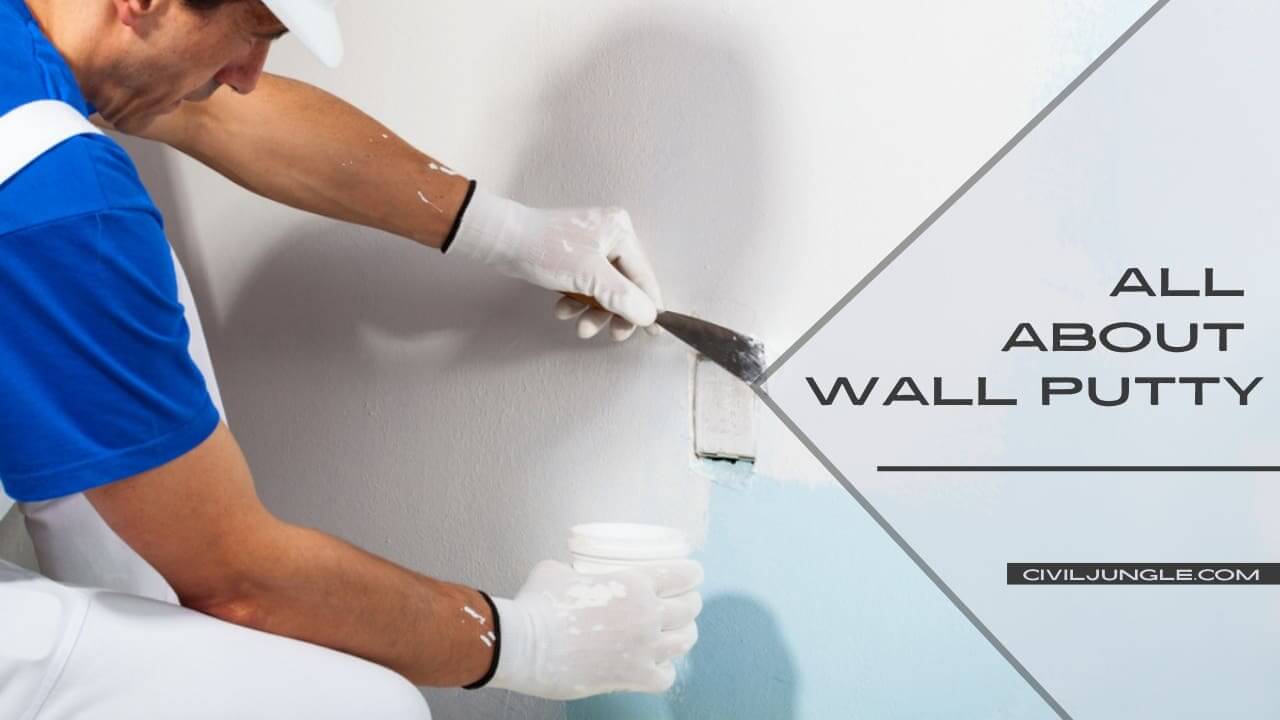
What Is Wall Putty?
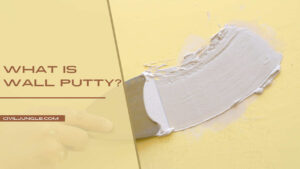
Wall putty is basically a substance which is applied to the internal wall of any house to increase the beauty and longevity of the house. Wall putty makes a strong base for painting and it also highlights the colour. It provides sharp and beautiful edges for our house.
Wall putty is basically a cement-type substance which is applied to create an even surface of the wall. It also uses a filler material which is used to fill pores, cracks, undulation in walls, etc.
If you increase the lifespan of paint, then you must apply 1 or 2 coats of wall putty. If there are no major wall cracks, then putty will be provided through the whole wall surface but final touches do not require at this step.
Generally, wall putty has a high plasticity property and the texture of wall putty is near about similar to the clay. Wall putty naturally provides a protective layer for the painting. Wall putty is available in the market in different colors and it can be applied on the new wall as well as the old wall.
What Is Wall Putty Used For?
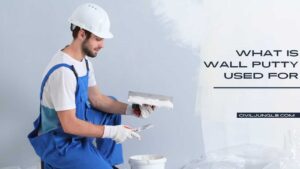
Wall putty is generally used to create a smooth surface of the wall. It also creates a protective layer. The tensile strength and adhesion power are wall putty are adorable. Sometimes, cracks are formed on the wall, then wall putty is used to fill those cracks easily. Here, it acts as a filler material.
Wall putty creates an excellent bonding with the plastered wall surface and the wall paint also gets a very good surface. Wall putty is also used to resist the decaying of walls because it becomes water resistant, abrasion resistant and flake resistant.
Types of Wall Putty

There are various types of wall putty are available in the market according to the purposes, those are in the following below-
1. White Cement Based Putty
White cement-based putty is a very popular type of putty which are used in modern days. White cement based is basically a mixture of white cement, polymers, and minerals. This type of putty is used for both interior wall and exterior wall purposes but this is good for internal purposes usage.
White cement-based putty provides a smooth and glossy finish to the wall surface. White cement-based putty cost is reasonable and most of the people can afford it.
White cement-based putty does not require any kind of skilled labor, so the labour charge is also not very high. Properties of white cement-based wall putty- This type of putty is good to use on exterior surfaces or interior surfaces or exposed surfaces.
White cement-based putty is a cement-based putty which gives a strong binding property. It has an excellent water-resistant property, which also resists dampness. The tensile is also good because of the adhesion property of cement and undoubtedly compressive strength.
2. Acrylic Putty
Acrylic putty is another type of wall putty which is water-based wall putty. Acrylic wall putty is a mixture of acrylic emulsion medium, pigments, and other additives.
Acrylic putty is only used for interior wall purposes and it is not used for exterior wall purposes. Acrylic putty provides you with a smooth surface finish which comes matte in nature.
Some special features of acrylic putty are following below- It is only used in an internal portion of the house because if use acrylic putty is in the exterior portion then extra heat will create some problems with the acrylic putty.
The binding property of acrylic putty is less than white cement-based putty. Acrylic putty is not good enough to resist the water totally and due to this water, wears inn the putty arrives, then we need a quick repair in every year.
The strength of acrylic putty is not so much effective and it is good to resist alkali problems. Acrylic putty is suitable for all kinds of paints, which provides a better choice for buyers. The installation charges are also reasonable, that’s why everyone can afford this type of putty.
What Is Wall Putty Made Of?
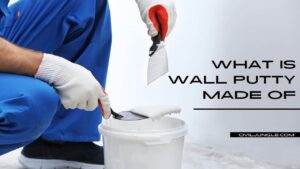
Wall putty is a mixture of material which is made of different ingredients like calcium carbonate power, which presents in maximum quantity; after that, some amount of sierozem powder is there.
Besides those materials, white cement is also there and a negligible amount of HPMC and ultramarine are also present. Wall can be used for both interior and exterior walls, where wall putty is used as a protective layer.
Application of Wall Putty
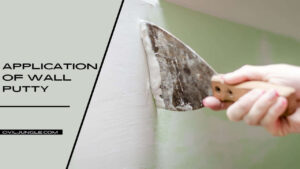
Wall putty can be applied for both interior and exterior purposes. The application process of wall putty is different for different wall surfaces, that are-
Step 1: Apply After Primer
When you are going to apply putty on the wall then you need to be sure that the wall must be free from any type of dust, grease, wallpaper, stains, oil paints, etc. If cracks are observed on the wall surface then those must be filled with putty then the next process will start.
Putty must be applied after drying the primer coat. It creates a defensive layer to the putty. One or two coats of putty can be applied but make sure that you can apply a second coat only after drying the first coat.
Step 2: Check The Surface Before You Apply
A surface groundwork checking is necessary before applying a coat of putty. Workers must wear safety because of avoiding dust and dirt.
The required tools for putty works are a knife, sandpaper, paint scraper, sanding block, cloth, brush, and water. Those are the major ingredients but some other minor tools are also required besides this.
Step 3: Remove The Loose Materials From Walls
If cracks are found on the wall then it is very important to check this, dig out, and remove the loose materials from that portion. You can use a screwdriver for this action.
Use sandpaper to remove all flakes and dust particles. Make sure that the surface must be freed from dirt, dust, grease, etc. For a lime coating wall, use a sandpaper or paint scraper and for an oil paint wall, use sanding.
Step 4: Final Application
According to the place or purpose, the wall putty is chosen. To make a thick paste, you need to add adequate water to the mixture and use a mechanical stirrer.
The paste is very prone to dry, so you need to be quick enough (use within 2 to 3 hours). We are using a wet or moist cloth to cover the putty paste to resist drying. Use a flat finish tool for applying the putty and the wall must be cleaned.
Disadvantages of Wall Putty
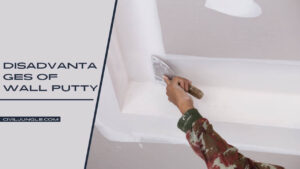
Wall putty is a very modern material which is widely used in recent times because it has some advantages. But it also has some disadvantages also, those are the following-
- Wall cracks are easily visible in wall putty walls because it is a smooth and even wall surfaces, so cracks can easily be detected.
- Wall putty creates a smooth and even surface to the whole wall but it is so much difficult to maintain the whole wall as smooth and even because it is not a machinery process.
- Wall finishes are different in nature because there are so many types of wall finishes are available in the market. So, it is so much difficult to apply the wall putty over all types of wall finishes.
- Another disadvantage of wall putty is it takes so much effort for cleaning and an unskilled person can not do this because there is a high chance of getting damaged wall putty.
Mixing of Wall Putty
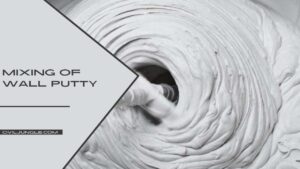
Mixing of wall putty is not a very difficult thing. To prepare wall putty paste you need a bucket and some amount of water. The mixing ratio must be 2:1; so, 2 parts of wall putty and 1 part of the water are needed. After that stir those materials thoroughly. After that apply the putty with a flat tool.
White Cement Based Wall Putty
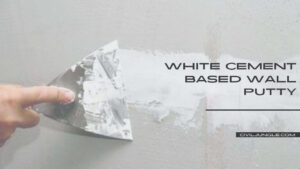
White cement-based wall putty is a special type of wall putty which is widely used on interior walls and exterior walls. White cement-based wall putty is used as putty, sealer material, or filler material because different additives are mixed with it to do such actions.
In white cement-based wall putty, polymers, minerals, and white cement are also mixed. The cost of this type of putty is not so much high, that’s why almost everyone can afford it easily. White cement-based wall putty does not require any skilled labor; so, the labor cost of this material is also low.
FAQ About Wall Putty
What Is Wall Putty?
Wall putty is a substance used to create a smooth surface on walls, enhancing the appearance and durability of both interior and exterior walls. It serves as a base for painting, fills cracks and imperfections, and provides a protective layer.
What Are the Different Types of Wall Putty?
There are primarily two types of wall putty:
- White Cement-Based Putty: Made from white cement, polymers, and minerals, it is used for both interior and exterior walls, offering a smooth, glossy finish.
- Acrylic Putty: A water-based mixture of acrylic emulsion, pigments, and additives, it is used mainly for interior walls and provides a matte finish.
What Is Wall Putty Made Of?
Wall putty is composed of calcium carbonate powder, white cement, sierozem powder, and small amounts of HPMC and ultramarine. These ingredients combine to create a mixture that fills gaps, smooths surfaces, and provides a base for paint.
How Do I Apply Wall Putty?
- Preparation: Ensure the wall is clean and free from dust, grease, or old paint. Fill any cracks and let the primer coat dry before applying putty.
- Application: Mix the putty with water according to the ratio (usually 2:1). Apply one or two coats, allowing each coat to dry before applying the next.
- Finishing Touches: Use sandpaper to smooth the surface between coats if necessary.
Can Wall Putty Be Used on Both Interior and Exterior Walls?
Yes, wall putty can be used on both types of walls. However, white cement-based putty is suitable for both interior and exterior surfaces, while acrylic putty is recommended for interior use only.
What Are the Benefits of Using Wall Putty?
Wall putty provides a smooth and even surface, improves the durability of paint, and offers resistance to water, abrasion, and flaking. It also helps in filling cracks and imperfections, enhancing the overall appearance of walls.
What Are the Disadvantages of Wall Putty?
Some disadvantages include the visibility of cracks on smooth surfaces, the difficulty in maintaining a perfectly even finish, and the effort required for cleaning. Additionally, wall putty may be less effective on some types of wall finishes.
How Should Wall Putty Be Mixed?
Mix wall putty with water in a 2:1 ratio (two parts putty to one part water). Stir thoroughly to achieve a smooth, lump-free paste. Use the mixture within 2 to 3 hours to prevent it from drying out.
Is There a Need for Skilled Labor to Apply Wall Putty?
While white cement-based putty is relatively easy to apply and does not require skilled labor, acrylic putty may need more careful application due to its specific properties and limitations.
How Do I Maintain Walls After Applying Wall Putty?
Regular maintenance involves checking for cracks and reapplying putty if necessary. Ensure walls are kept clean and protected from excessive moisture to prolong the life of the putty and paint.

